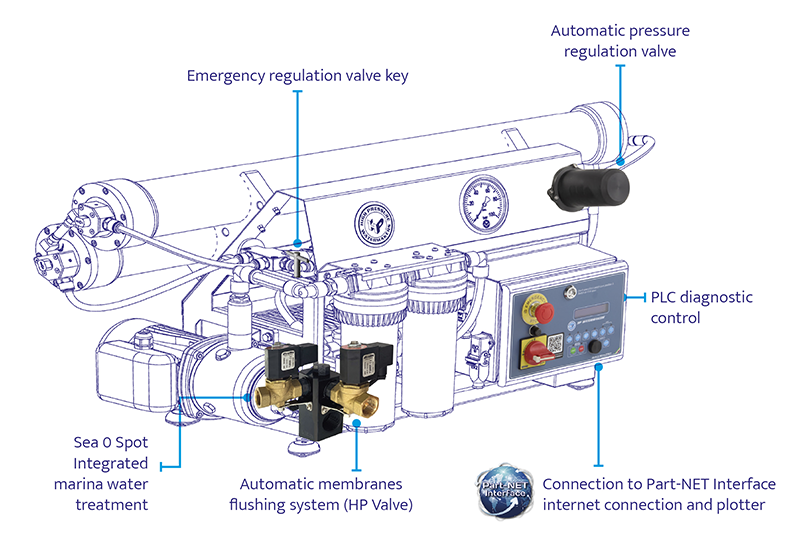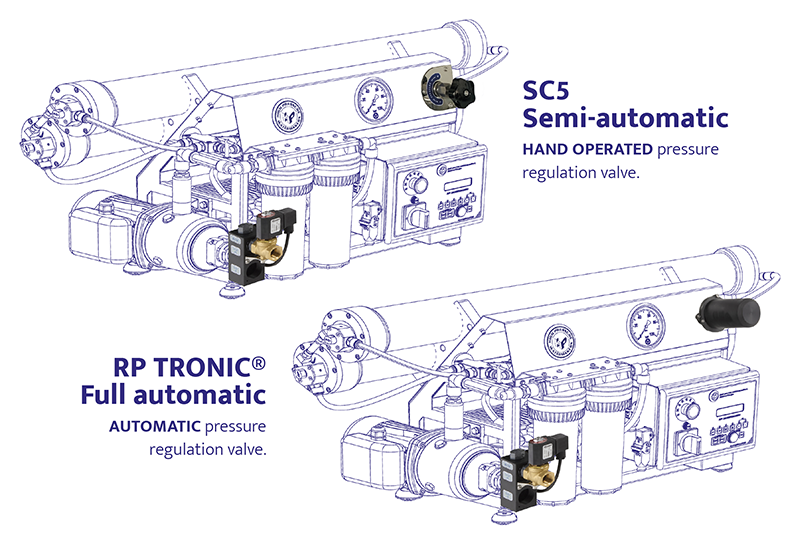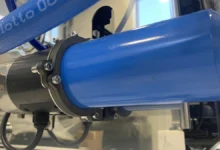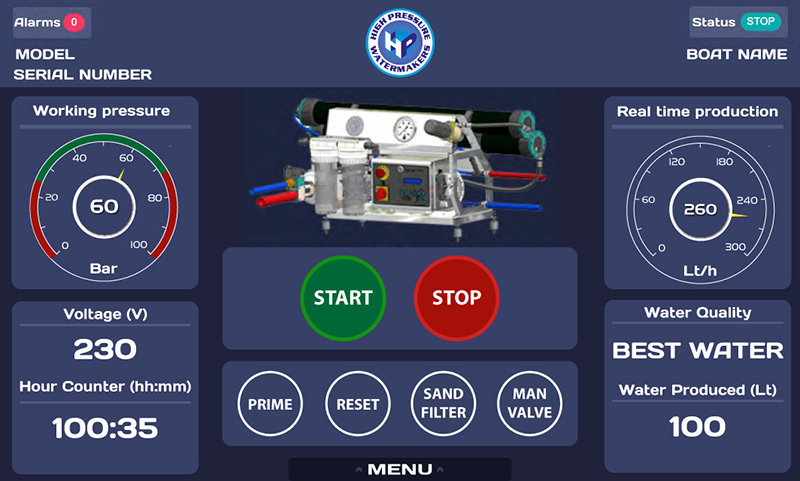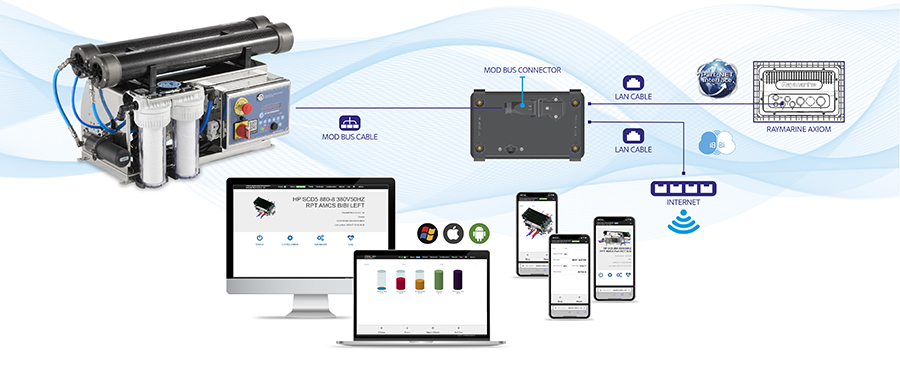Everything You Wanted to Know about Onboard Watermakers
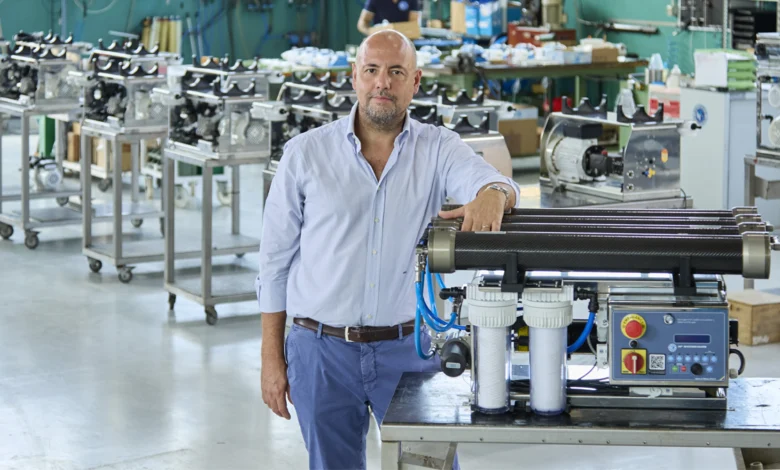
Watermakers onboard have a longstanding history of over 30 years in production. However, recent technological advancements have propelled them into a new era, shifting from intricate machines demanding meticulous upkeep to everyday household appliances. Now, they can be effortlessly managed via a plotter, onboard home automation systems, or even remotely through the Internet. To delve into their functionality and explore the latest technological breakthroughs revolutionizing desalination systems, we turned to Gianni Zucco, co-founder of HP Watermakers. As a pioneering Italian company at the forefront of technological evolution in this field, Zucco sheds light on these innovations through straightforward yet insightful answers.
How does the reverse osmosis desalination process work?
First of all, allow us to point out that reverse osmosis technology is practically the only one adopted in pleasure boating. On large ships engine cooling water can also be evaporated to obtain distilled water, which is then mineralized, but it is an expensive and non-competitive technology for the vast majority of pleasure boats, and is normally used only on commercial ships. The principle of reverse osmosis is very simple: water is taken from the sea and compressed inside osmotic membranes that separate salt water from fresh water. This is the finest possible form of water filtration. The membranes used in reverse osmosis are generally made of polyamide, a substance chosen mainly for its permeability to water and its impermeability to various dissolved impurities, including salt ions and other small molecules that cannot be filtered.
How has on-board desalination technology evolved?
The first reverse osmosis desalination systems were made more than forty years ago. For many years the technique of their construction was undoubtedly refined, but no substantial progress was made in simplifying their use. It will be clear from the description above that a manual desalinator requires continuous intervention to adjust both pump pressure (based on the salinity and temperature of the seawater, which, as you can well imagine, change constantly when at sea), and on the maintenance (washing) of the membranes. These are the two operations that must still be done manually in the vast majority of desalination systems (about 80%), requiring only minimal skill but a lot of attention.
There are also semi-automatic models in which the washing of the membranes is automated at the end of each production cycle, but human intervention is still necessary since the pressure regulation valve remains installed at the end of the circuit; if not opened manually, it will not let the washing water flow, so that the salts remain inside the membranes, crystallizing over time. Finally, there are fully automatic desalination systems in which both operations are carried out automatically, with no need for intervention by the sailor or owner of the vessel. HP Watermakers was the first to develop automatic watermakers 20 years ago, while also continuing to produce non-automatic models.
Why are HP Watermakers desalination systems ‘truly’ automatic?
The term automatic is often used inappropriately, and desalination systems are no exception. At HP Watermakers, when we say automatic, we mean a real ‘appliance’ that can be controlled with a few simple commands, rather like an air conditioning system. To do this, we developed our patented RP TRONIC system, representing the watershed between manual and automatic desalination systems, because it permits automated regulation of the pressure exerted by seawater on the osmotic membranes. In practical terms, the high-pressure pump (which sends seawater to the membranes and to the RP TRONIC valve downstream) ensures that the pressure is kept constant at 60 bar; if this does not happen, fresh water production is affected.
A manual valve must be constantly checked, especially out at sea, requiring frequent trips down into the engine room. If salinity increases, production will inevitably decrease, and pressure will rise until it becomes too high and the system shuts down. An increase in temperature would cause the opposite phenomenon, i.e. the pressure would drop, as would the system’s productivity. It is therefore easy to understand how the two elements interact with each other and can negatively affect the smooth operation of the desalinator. HP Watermakers is the only manufacturer to have developed and patented an automatic system ensuring continuous pressure regulation by the RP TRONIC valve, 20 years ago.
The same applies to automatic washing of membranes, which is standard on HP Watermakers desalination systems: RP TRONIC, which like all pressure-regulating valves is located at the end of the circuit as if it were a closed tap, opens automatically, allowing all the salt water to drain out of the system and, most importantly, out of the membranes. This too is an important aspect, because if membranes are not rinsed properly, the salt that is deposited will eventually crystallize on them, and chemical flushing will be needed to restore full efficiency; this occurs regularly with a manual valve. But HP Watermakers’ attention to the durability and efficiency of its watermakers over time goes beyond this.
Thanks to the AMCS (Automatic Membrane Conservation System), also exclusive to HP Watermakers, during each shutdown and washing cycle a dispenser injects a few drops of Sodium Metabisulphite onto the membranes. This inert acid does not damage the membranes, but is essential to prevent bacterial proliferation and therefore the creation of mucilage, which is always possible in the absence of chlorine. With all these systems, the service life of the membranes can extend to up to 10 years.
What is the difference between a watermaker and a water softener? Can I drink desalinated water?
Put simply, a watermaker transforms salt water from the sea into fresh water, while a water softener sequesters calcium molecules from the water to prevent the formation of limestone molecules; in boating, it can be used to treat quay water. As for the question of whether to drink water produced by a watermaker: it is not certified as drinkable, because this would require a declaration made by a third party, unfeasible at sea, where conditions are constantly changing. However, it is certainly purified water, and as such it is drinkable, though it is important to realise that the water is stored in tanks, requiring protection from the bacteria that can inevitably form.
A second step is therefore advisable before drinking the water, which is why HP Watermakers has developed the GENIUS system: a water dispenser connected directly to the on-board drinking water network which produces drinkable chilled and/or sparkling water using ultrafiltration membranes and silver ions. By installing a UV sterilization system at the tank outlet, it is possible to protect all the fresh water distribution lines on board.
Can I install a watermaker on a boat that is already sailing? What’s the minimum size of boat?
Everything is possible! Many new boats leave the yard without a desalination system, the installation of which is usually entrusted to the dealer before delivery, or after the first season, when the owner realizes that a desalination system is indispensable. On older vessels, it is necessary to check if there is sufficient space in the engine room, installing a seawater intake if necessary. We have installed systems on boats with fairly small engine rooms, ‘hanging’ the watermaker from the ceiling with brackets almost directly above the engines. As for the size of the boat, our smallest model, HP SCA100 KILO, designed specifically for medium-small boats, produces 100 l/h with a consumption of 1 kW and weighs only 60 kg; it can even be installed on a dinghy or a daycruiser without any particular problems.
All our models are designed for complete automation thanks to their compatibility with RP TRONIC; compatibility with on-board systems must be verified to determine whether it will be possible to take advantage of our Part-NET interface, which is fully compatible with the on-board electronic systems made by brands such as Raymarine, Garmin, Furuno, Simrad, B&G and Lowrance. Part-NET allows the user to control the entire desalination system – including pressure and all other operating parameters – from the plotter on the dashboard, or even from a smartphone when an internet connection is available, without any manual intervention required.
How can I get a competent technician to evaluate the possibility of installing a watermaker?
Contact qualified personnel to determine the feasibility of installation on board your boat. HP Watermakers has a worldwide network of technicians. From Dubai, a reference point for the Middle East market, to Fort Lauderdale, Florida, covering the United States, Canada, Mexico and the Caribbean, as well as the Maldives and South Africa, plus another 56 dealers operating in as many countries all over the world. We have about 80 (number) dealers all over Italy. In each of these locations, owners can find technical personnel ready to recommend the best solution for their boat, install the system and, of course, provide prompt after-sales service.
Another exclusive system of ours gives boat owners peace of mind when it comes to technical assistance: BiBi, the world’s first and only Internet interface for automatic desalination systems. BiBi can be installed as an option on both new and after-sales systems to provide remote technical assistance with the watermaker, notifying the owner of in advance the type and extent of any malfunction in advance and communicating directly with the user through real-time notifications. BiBi also communicates with the HP operations centre to assist the user in an alarm or emergency situation, and can send an alarm report to the HP authorised service closest to the user.
The system connects the watermaker to the internet and works through a cloud application which users access with a dedicated password, providing access to watermaker control and complete diagnostics services. It will then be possible to turn the machine on or off, reset alarms, monitor operation and obtain complete data on its operation through any device equipped with an Internet connection. Finally, BiBi adds one year to the watermaker’s warranty, for a total of four years with a priority assistance service.

